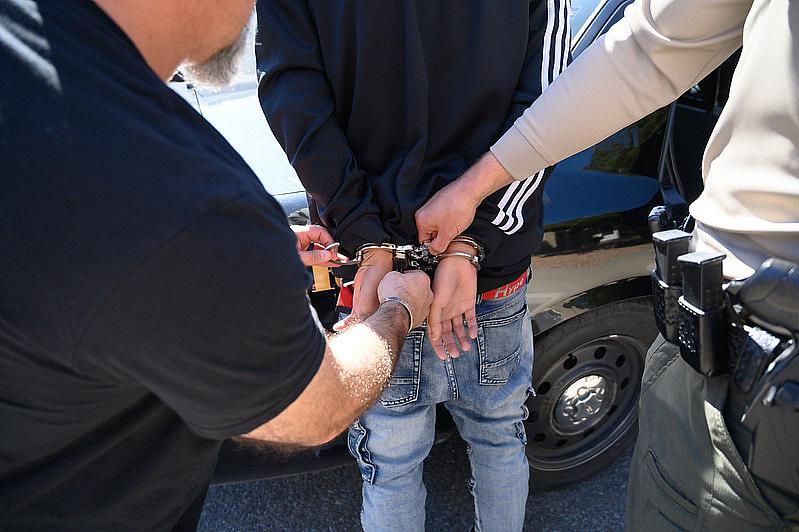After key sources bail, a reporter embraces flexibility for series on California’s juvenile justice transformation

Photo via Flickr/Creative Commons; Photo credit: https://flickr.com/photos/usmarshals/49025269602/
I undertook an ambitious project for the 2023 California Health Equity Fellowship: A three-part series investigating the closure of California’s century-old juvenile state correctional institutions and scrutinizing the challenges faced by county probation departments in handling youths convicted of serious crimes like robbery, rape and murder.
Juvenile realignment, the transition of state authority and responsibility for youth convicted of felonies to the county level, is a crucial and pressing issue in California. The transfer of accountability raises significant equity concerns for vulnerable young people, especially as a considerable number of confined youth are people of color. It also prompts questions about the capacity of county governments to effectively house and rehabilitate these young individuals.
The closure of the state’s youth prison system had been in progress since Gov. Gavin Newsom announced the shutdown in 2020. These closures and the subsequent juvenile realignment were aimed at reducing costs in state budgets and giving these young individuals and their families more opportunities to reconnect. The intention was that increased family and community involvement would improve the chances of redirecting convicted young people onto a more positive life path. The main concern, however, was that some counties were locking youth up in what one youth advocate called local “mini dungeons.”
Various California news publications were reporting on the closure of state-run juvenile prisons, but juvenile realignment remained a relatively unknown topic outside of certain juvenile justice-informed circles in the state. Given the intricate nature of this massive undertaking, complicated by varied approaches across all 58 counties, there was a clear demand for increased watchdog journalism.
I knew I had my work cut out for me, but I was reassured by having two crucial sources on board: One could arrange a jailhouse interview with a youth in the process of being transferred from a state facility to a county juvenile hall; and the other could provide evidence and access to insider connections to reveal the chaotic and perilous conditions within a juvenile detention center in one Northern California county.
None of that panned out, however. Instead, both sources dropped me. At first, I was devastated. But very quickly a heavy weight lifted off my shoulders and I felt liberated.
In the weeks leading up to my key sources dumping me, my reporting felt like pulling teeth —painful and frustrating, with a distinct lack of trust from sources. The problem was I had a vision built up from my pre-reporting, and needed my sources to fulfill that vision, but I hadn't built a rapport with the sources. I came across as transactional, someone looking to extract information to tell a good story. When the first key source stopped communicating with me, I hung my hopes for a story on the second source for weeks, until that one too decided it wasn’t going to work. I was crushed. The last thread snapped, and my lofty vision floated away.
Without a clear course of action, I found the freedom to shed the bulldog reporter persona and adjust my approach. I continued to diligently engage with one source after another. Attending online county juvenile justice commission meetings proved to be immensely valuable, offering a wealth of information. The convenience of remote participation is noteworthy, and I wholeheartedly recommend it. I even brought along my AI transcription bot to record and transcribe the meetings.
However, I was still missing a crucial element — the personal connection. My best narrative-driven stories in the past had always been rooted in in-person interactions. During the pandemic, I had become stuck in a routine of remote reporting. But if I was going to make this story — I’d have to get out of the apartment.
A source invited me to attend an in-person Board of State and Community Corrections meeting in Sacramento on the closure of Los Angeles’ juvenile halls due to their failure to meet state requirements and in the wake of a youth overdose death. The meeting proved to be a turning point in my reporting. I had the opportunity to engage with more than a dozen juvenile justice advocates and experts. Among them was Katherine Lucero, a former juvenile court judge from San Jose, who had been appointed in 2022 to lead the Office of Youth and Community Restoration, the new state agency replacing the old Department of Juvenile Justice.
While the reporting remained challenging and time-consuming, my flexibility and curiosity ultimately paid off. I adapted my approach and produced an in-depth explainer piece for a national audience, titled “Are California Counties Ready to Handle Juvenile Offenders Now That State Youth Prisons Are Shuttered?” for Youth Today and Juvenile Justice Exchange.
I also crafted a series of “as-told-to” stories featuring advocates who had been impacted by juvenile justice — “Once a 'Badass Latina' and Handcuffed Schoolboys: They Now Push for Juvenile Justice Reform.” Additionally, I conducted a Q&A with the head of the Office of Youth and Community Restoration.
Although it wasn’t the original vision I had in mind, I take pride in the work I produced and even received some of the best compliments from the sources in the “as-told-to” pieces, who remarked that I had perfectly captured their voices and stories. I was touched and honored. I learned the importance of treading lightly with vulnerable sources, knowing when to let go of plans and the necessity to demonstrate my commitment to the story with action.
